Gynecomastia, a condition of enlarged male breasts, affects more men than many of us realize. According to the NIH (National Institute of Health), 50-60% of adolescent males are affected due to hormonal changes. In most instances, this issue tends to resolve during one’s twenties. 65% of males between the ages of 27-92 experience some type of enlargement of their breasts. Gynecomastia tends to be highly prevalent between the ages of 50-69, with about 1 out every 4 men being affected. The condition may also affect young pre-pubescent boys starting at age 10. In some instances, unevenness may develop between the two male breasts.
The ASAPS (American Society for Aesthetic Plastic Surgery) reports a 30% spike in the number of gynecomastia surgeries performed between 2011 and 2012.
There are two main tissues in enlarged male breasts, gynecomastia. Which are:
- Enlarged breast glands
- Accumulation of fat tissue
- Combination of both.
Anyone considering a treatment procedure for male breasts should first understand what factors are causing their condition. It would then be important to become educated about the different treatment options available in order to weigh the pros and cons before making a final decision.
No Title
For more details on About Gynecomastia Male Breast: Everything You’ve Ever Wanted to Know – The Ultimate Guide Visit: https://dru.com/services/everything-you-have-ever-wanted-to-know-about-gynecomastia-the-ultimate-guide/ Dr. Umar Hair & Skin Clinic located in Manhattan Beach, CA -Visit our website: http://bit.ly/2HxIQXk -Free Online Consultation (viewed within 24 hours by Dr. Umar): https://dru.com/skin-free-consultation/ **Follow us on social media** -FB:http://bit.ly/2L7Bk7I -IG: http://bit.ly/2PjKtxZ -Twitter: http://bit.ly/2ZpecKn -Pinterest: http://bit.ly/34adXSf
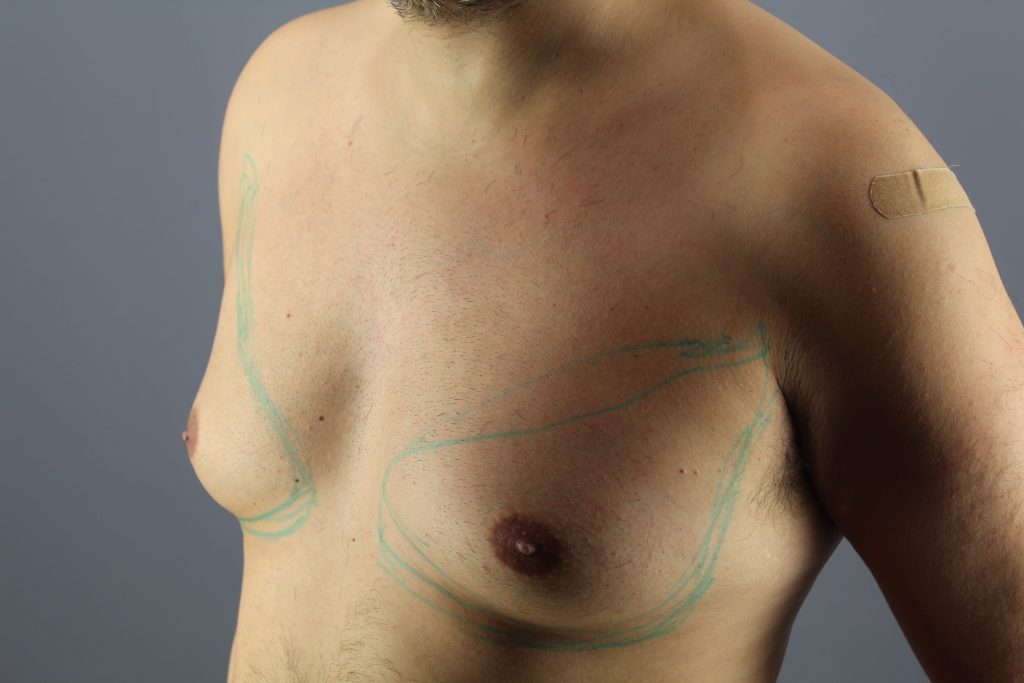
Gynecomastia, more commonly known as “man boobs,” may be detrimental to a man’s self-esteem
The Rock’s Gynecomastia Dilemma
Celebrity, Dwayne Johnson, also known as “The Rock” suffered from having enlarged male breasts. He opted for a gynecomastia procedure and candidly shared his experience with his fans.

Pathogenesis or Mechanism of Gynecomastia
The most common cause of gynecomastia is weight gain or obesity. The breast area is one of the sites for fat accumulation in overweight individuals. If not checked, the breast will grow to result in gynecomastia. In cases where fat is not necessarily the culprit, what exactly are the factors that contribute to the enlargement of male breasts? To understand the answer to this question, let’s first consider the roles of the sex hormones, testosterone, and estrogen.
In short, testosterone is responsible for male traits like body hair and muscle mass. Estrogen, on the other hand, controls female traits such as the development of breasts.
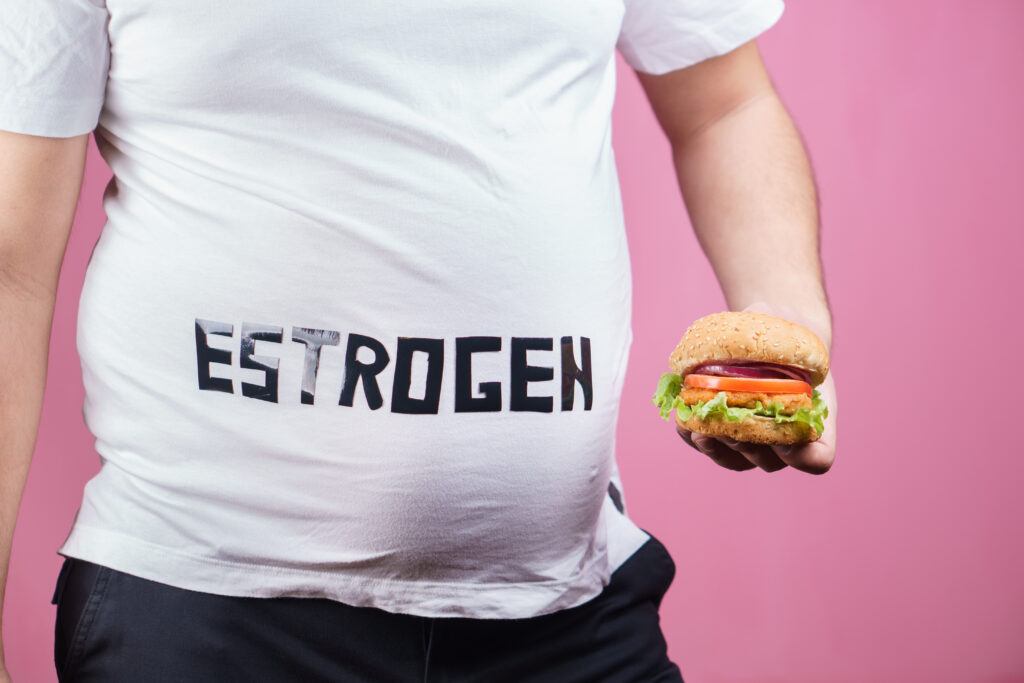
Both testosterone and estrogen are present in men and women. While testosterone is predominant in males, small levels of estrogen also exist. There are different variables that will work to disrupt the usual balance of testosterone and estrogen levels, increasing estrogen concentrations relative to testosterone. They may inhibit the effects of testosterone, actually, cause a reduction, or increase the amount of estrogen present. Several examples include:
- Health conditions
- Aging and weight gain
- Medications (i.e. antidepressants, chemotherapy drugs, heart medications)
- Use of street drugs and alcohol
Other possible health-related contributors to gynecomastia include:
- kidney failure
- liver failure
- malnutrition
- tumors
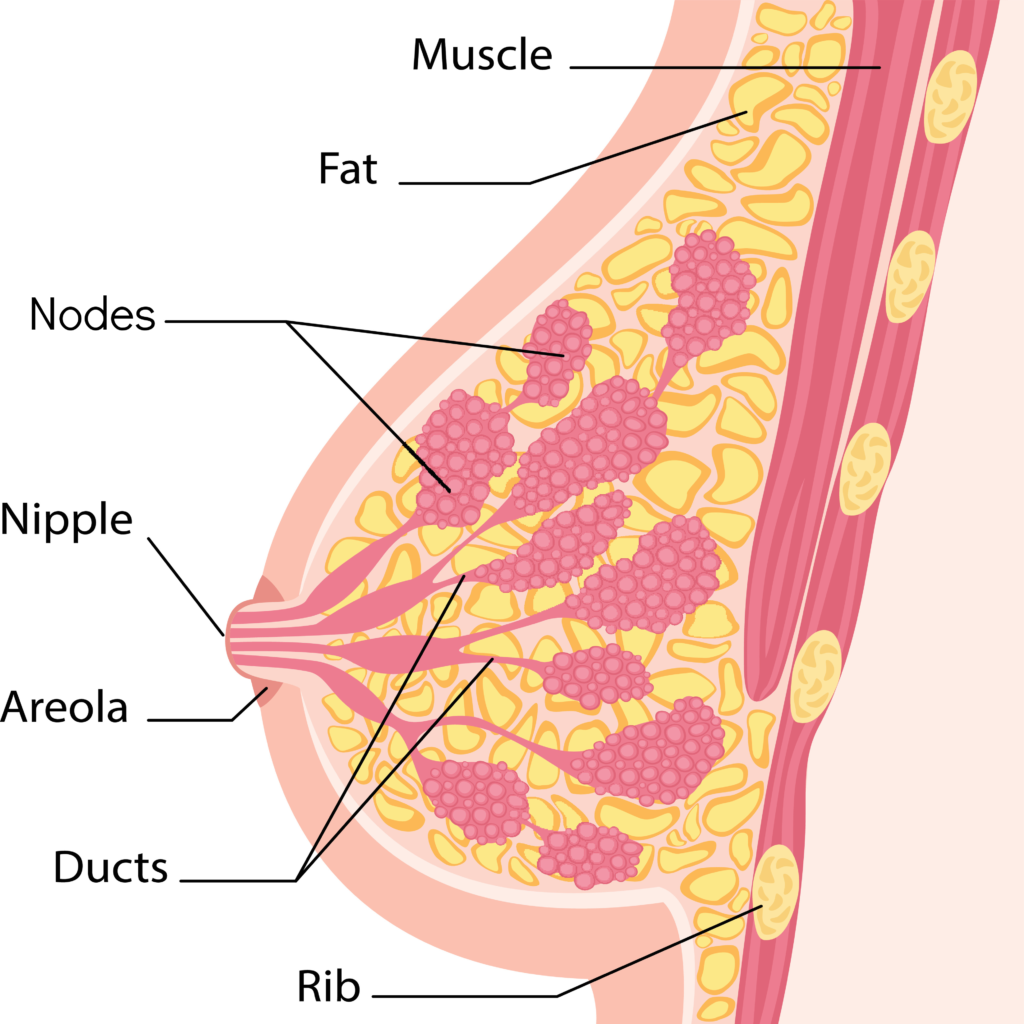
Cross sectional anatomical view of the male breast which includes fat, muscle, glands and lymph nodes
The Effects of Bodybuilding Steroids
Gynecomastia is also likely to occur in bodybuilders who take anabolic steroids and androgens to increase their body mass. Steroids and excess androgens, however, are transformed by the body into estrogen.
The condition, for the most part, however, tends to be seen in overweight males. It is therefore a misconception that exercise and diet can get rid of enlarged male breasts by burning away unwanted fat.

Obesity as a Cause of Gynecomastia
One area of weight gain by fat accumulation is the breast zone. Obesity would lead directly to gynecomastia by fat accumulation. Classical gynecomastia from the growth of actual breast glands can also occur as a result of obesity. This is because, inside the accumulated fat, the body produces an enzyme called aromatase which converts testosterone into estrogen. This dynamic perpetuates an ongoing cycle of creating excess body weight and bigger breasts.
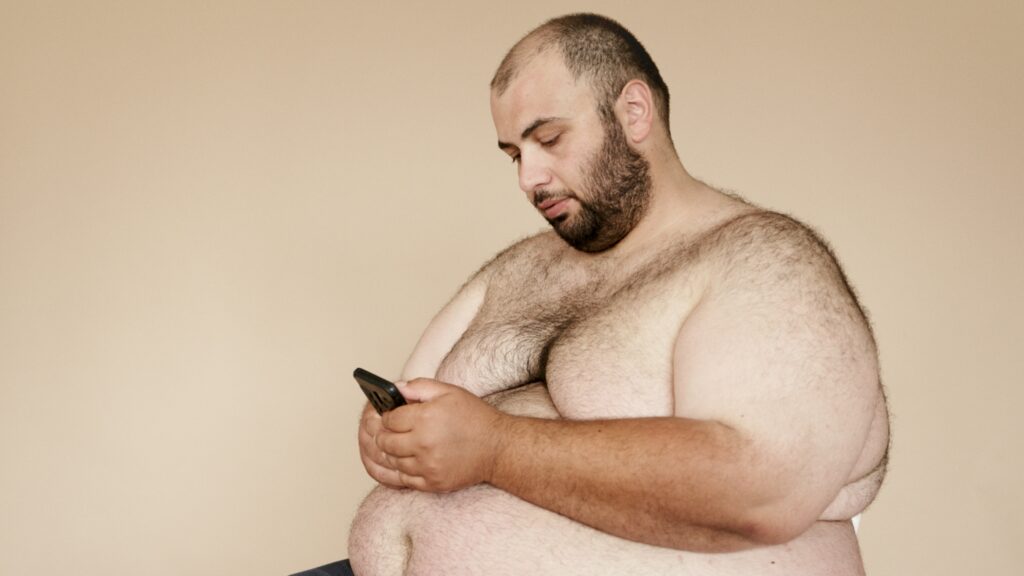
The Link Between Marijuana and Male Breast Enlargement:

Marijuana usage may increase estrogen levels in men and give rise to gynecomastia. Image: CCO1.0
Smoking weed has become a popular and accepted form of recreational drug use. Regardless of whether we are speaking of prescriptions, legal, or illegal drugs, etc, any chemicals that we intake will travel throughout the bloodstream and exert some type of effect on various different areas of the body. And this interfacing is likely to incur a rather high risk of unwanted physiological effects.
Marijuana itself stimulates the production of estrogen while diminishing testosterone. Some studies have found significantly lower testosterone in regular smokers.
The drug component of marijuana is known as THC which prevents a hormone called GnRH from being released. The role of GnRH is to stimulate the production of testosterone as well as other hormones in the body. When blocked, estrogen levels may rise and contribute to the formation of man boobs.
Growth Hormones Used In The Meat and Dairy Industries

The meat and dairy that we consume contain excessive hormones. Lactating cows, for example, secrete large quantities of various different hormones which are then present in milk products. The problem becomes worse when growth-enhancing hormones are administered to livestock animals.
Consuming these added hormones (whether they are intrinsic or exogenous) may potentially disrupt our own balance of testosterone and estrogen [1]. Within the context of disproportionately high estrogen levels, there is a much higher potential for developing gynecomastia.
Available Treatment Modalities For Gynecomastia
Without question, having noticeable male breasts is distressing. And for sufferers, the goal of having them reduced becomes an urgent priority. The pressing need for gynecomastia treatments has prompted the development of various medical advancements aimed at the common objective of getting rid of “moobs”, so to speak. Here is an overview summary of these procedures:
The Role of Liposuction for Gynecomastia Removal
In liposuction, a cylinder (straw-like) cannula is inserted beneath the skin to suction away the unwanted fat which enlarges the male breasts. Surgical liposuction is commonly used to restore a normal appearance to the male breasts. It could be ordinary liposuction or assisted by vibration, ultrasound, or laser. However, these forms of liposuction are only effective if:
- The gynecomastia is primarily due to fat accumulation since liposuction will only remove fat tissue and will not remove breast tissue. Thus if the breast mound is caused by the growth of mammary glands, that would need to be removed through a wider surgical incision which will leave a scar.
- There is no excess skin involved. Especially in older individuals whose skin has lost its laxity, following liposuction, the skin will not contract, resulting in droopy skin or saggy breasts. This would have to be removed by open surgery through a wider incision, which will result in a linear scar.
Traditional liposuction alone has been inadequate as a gynecomastia treatment. This has largely been due to the fact that male breast tissue contains high concentrations of fibrotic tissue which can be difficult to break apart and suction away from the body. Thus the role of energy-assisted procedures has become increasingly important to overcome these challenges.
Ultrasound-Assisted Liposuction for Gynecomastia Treatment
For some patients, the use of ultrasound may be necessary to loosen the adipose (i.e fat) tissue. This facilitates the suction process, helping to remove the unwanted fat far more effectively. Ultrasound is a non-thermal form of energy used to destroy and remove unwanted tissue using less physical effort.
The main downside to ultrasound-assisted liposuction is that only a small proportion of gynecomastia sufferers qualify as patients. This approach is limited to men with good skin laxity and little to no sagging.
Laser-Assisted Liposuction for Gynecomastia Removal
In some cases, greater precision may be required when removing unwanted fat within the male breast areas. Laser energy may be used to help achieve this by using heat to destroy the fat and glandular tissue.
However, It is incapable of breaking down breast tissue to the degree RF does. Also, by comparison, skin contraction occurs to a much smaller extent.
Surgical Mastectomy for Gynecomastia in Men
In some gynecomastia patient cases, enlarged glandular tissue, as opposed to fat, is the main factor to overcome. Surgical removal requires the use of a scalpel to remove these structures. Doing so would inevitably result in permanent linear scarring. Patients who wish to feel comfortable in social situations without a shirt (e.g. going to the beach, swimming, pool parties, etc.) would need to consider this factor when weighing the pros and cons of various treatment types for male breast removal.
Radiofrequency Assisted Liposuction (RFAL) Using BodyTite for Gynecomastia Removal
A much newer advancement in the world of gynecomastia treatment is the use of radiofrequency, also known as RFAL (radiofrequency assisted lipolysis). This energy is delivered through a surgical apparatus inserted into small, circular incisions created on both sides of the chest. BodyTite technology by Inmode offers the ability to not only liquefy and dissolve unwanted fat and glandular tissue but also to tighten the overlying skin. By controlling the heat temperature range of the RF energy, providers can not only destroy unwanted tissue but also tighten and restructure skin collagen fibers to improve the overall contour of the patient’s male breast.
The heat from the radiofrequency works to liquefy any unwanted fat tissue. It also destroys enlarged glandular structures, covering the two main types of gynecomastia. Unlike other types of Assisted liposuction (vibration, ultrasound, or laser), RFAL is able to affect much deeper tissue layers. It also works to contract fiber networks beneath the skin, so that it contracts, producing a 3D-remodeling, “shrink-wrap” effect. Researchers have found that skin retraction is greater than in the case of manual liposuction when RF is used.
This capability is quite advantageous in older patients who exhibit significant skin laxity. RFAL not only eliminates unwanted male breast tissue (i.e. fat or glands) but also recontours the breasts, preventing unwanted drooping or sagging.
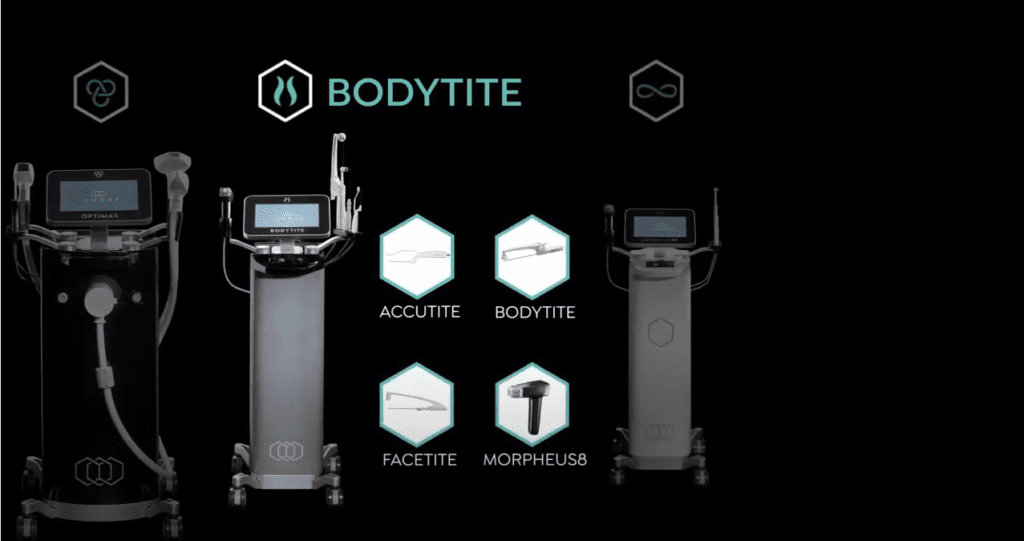
BodyTite Publication on Soft Tissue Remodeling With RFAL
Radiofrequency assisted liposuction represents a novel usage of electromagnetic energy. In a study published by the Aesthetic Surgery Journal, a group of researchers conducted a controlled experiment that tested the effectiveness of BodyTite as an adjunct to liposuction [2]. They focused on two parameters to assess improvement:
- soft tissue contraction
- body contouring
The advent of BodyTite marks a huge demographic shift in terms of who can benefit from liposuction procedures. Previously this was most commonly undertaken by middle-aged women who had already given birth to children and wanted to recover a slimmer body. Now, it is possible for younger patients to qualify for body contouring.
Also, older forms of liposuction emphasized the removal of fat. However, the issue of loose skin (which remained following the procedure) continued to remain unresolved. In this study, researchers found that BodyTite was able to restructure fibers and contract soft tissue three-dimensionally to produce a significant improvement in the body contour of the subjects. The data indicated an 89% patient satisfaction rate where participants expressed that they would recommend the procedure to their friends, family, and associates.
Research Study – Is RFAL Effective for Gynecomastia?
In 2012, the European Journal of Plastic Surgery published a study entitled, Gynecomastia Treatment Using Radiofrequency Assisted Liposuction. Due to the rise of obesity across developed Western nations, the authors noted that gynecomastia removal has become “one of the more popular male elective surgeries.”
As discussed earlier, there are limitations to conventional techniques for reducing unwanted male breast tissue. These include liposuction alone, laser, and ultrasound-assisted liposuction.
The need for improving the treatment of gynecomastia has prompted the need to investigate the effectiveness of RFAL (radiofrequency-assisted liposuction). Researchers performed a controlled experiment on 59 males who received treatment using radiofrequency alone or trans-mammary glandular reduction used in conjunction with liposuction. They were interested in assessing the following areas of focus:
- the effectiveness of glandular tissue coagulation
- contraction of soft breast tissue
- side effects
- quality of aesthetics
At the end of the study, 90% of the subjects expressed high satisfaction with their final outcomes. And no revision surgeries were necessary. The authors concluded that the use of RFAL may be a “potentially powerful option in the treatment of male gynecomastia, having the advantages of strong coagulation, liquefaction, and aspiration of glandular tissue.”
VIDEO RESULTS: Radiofrequency Assisted Lipolysis for Gynecomastia Treatment By Dr. Sanusi Umar (Dr. U)
Before and After Photos: Radiofrequency Assisted Lipolysis for Gynecomastia Treatment Results By Dr. Sanusi Umar (Dr. U)
At Dr. U Cinic, Sanusi Umar, MD uses RFAL to treat gynecomastia. The device called BodyTite manufactured by Inmode is used by Dr. U to impart in his gynecomastia patients a normal and masculine-looking chest without the invasiveness and linear scarring associated with surgical excision.
Dr.U applies radiofrequency energy to emit an optimal temperature range to achieve the goals of fat liquefication, glandular tissue destruction, and the contraction of the fibroseptal network to reverse sagging. Here is a patient example where this was achieved to eliminate the appearance of man boobs. Thanks to his BodyTite procedure, he was able to achieve a normal masculine-looking chest without having to endure any form of linear scarring. See his before and after photos showing the improvements created on his chest at various angles.
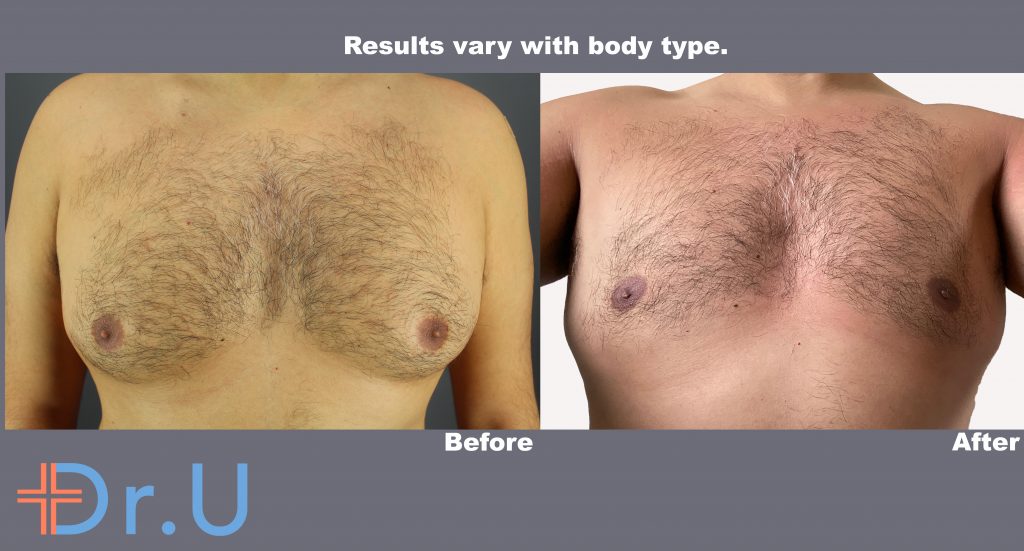
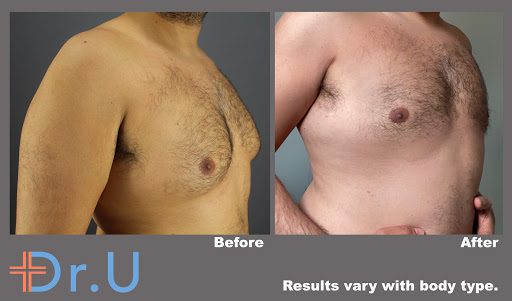
A gynecomastia procedure with BodyTite eliminated unwanted bulging and sagging, as illustrated in this three-quarter view of the patient’s results *
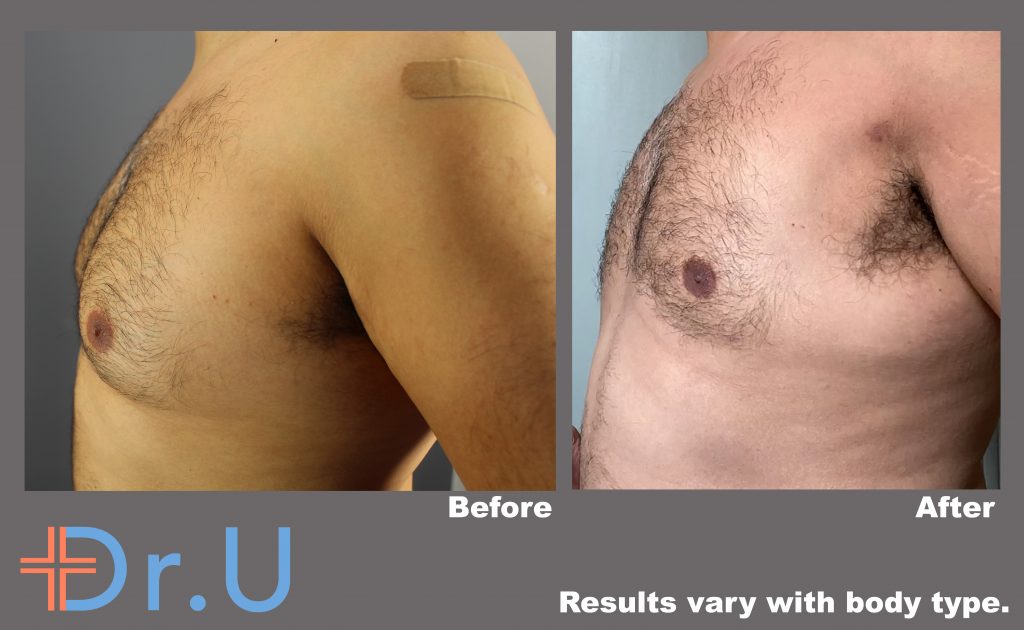
This patient’s BodyTite procedure succeeded at flattening this patient’s male breasts and ending his struggles with gynecomastia *
In the end, the patient attained the youthful and lifted male breast contours that he wanted. Thanks to his BodyTite procedure, his struggles with man boobs finally came to an end.
If you are considering a gynecomastia procedure with BodyTite, sign up for a free online consultation with Dr.U. Click the button below to get started.
Have more questions about gynecomastia and treatment options for man boobs? Ask Dr.U! Send us your inquiry.
FAQ – Treating Gynecomastia Without Surgery
Who are the best candidates for gynecomastia procedures using BodyTite?
Gynecomastia performed using the BodyTite system is recommended for all affected men. It is additionally advantageous, in men with mild to moderate degrees of skin laxity who do not wish to undergo a surgical excision performed with a scalpel. It can also be used to treat “non-traditional liposuction candidates,” according to the Aesthetic Surgery Journal.
Why is RF a better choice than laser or ultrasound as adjunct treatments to liposuction?
Compared to laser as well as ultrasound, radiofrequency provides continuous heat energy to larger and deeper areas of tissue when delivered continuously. It also elicits the contraction of the fibro-septal network beneath the skin helping to renew the contour of the targeted region. Also, this form of energy has demonstrated a much higher safety profile than laser. It is also safer for the skin of all ethnic groups due to the reduced risk of overheating and hyperpigmentation.
Am I too young to undergo a gynecomastia procedure performed using BodyTite?
Generally, BodyTite procedures are offered to patients within the age range of 18-65. However, this can vary on an individual basis depending on the extent of skin laxity present.
After a BodyTite gynecomastia procedure, when can I resume my usual daily activities?
Following a gynecomastia procedure using BodyTite, it is possible to resume your normal activities within just one day. According to the American Society of Plastic Surgeons, the recommended guideline for local anesthesia is 35mg/kg for tumescent liposuction. This will help entail a more comfortable overall experience with shorter downtime. They regard this dosage parameter to elicit an excellent safety profile.
Reference
[1] Andersson AM, Skakkeback, NE. Exposure to exogenous estrogens in food: possible impact on human development and health. EurJ Endocrinol. 1999;140(6):477-485. Accessed June 8, 2020. [2] Theodorou SJ, Del Vecchio D, Chia CT. Soft Tissue Contraction in Body Contouring With Radiofrequency-Assisted Liposuction: A Treatment Gap Solution. Aesthet Surg J. 2018 May 15;38(suppl_2):S74-S83. [3] Blugerman, Guillermo & Schalvezon, Diego & Mulholland, R. Stephen & Soto, Javier & Siguen, Maria. (2012). Gynecomastia treatment using radiofrequency-assisted liposuction (RFAL). European Journal of Plastic Surgery. 36. 10.1007/s00238-012-0772-5.
Further Reading
Learn more about non-surgical facial contouring using RFAL for jowls, under-eyes, and more
